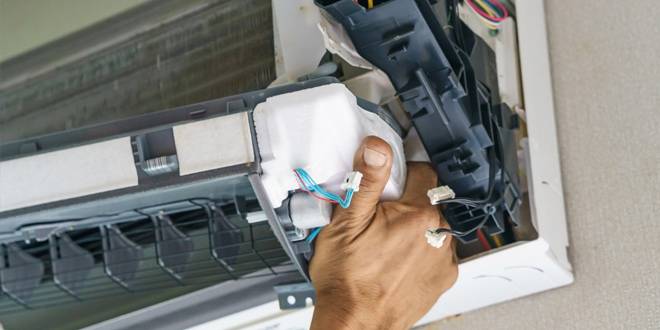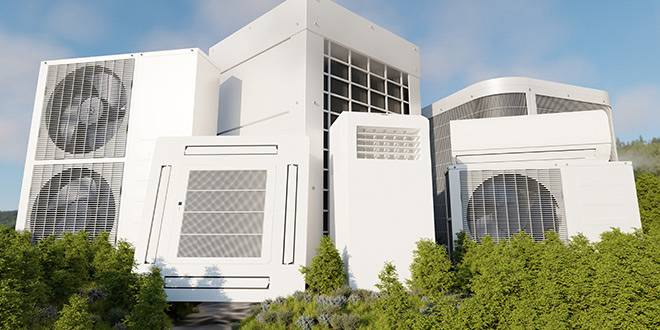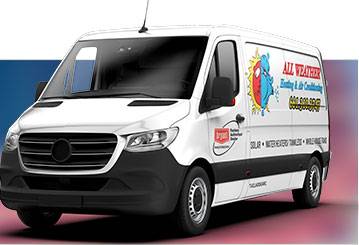In Vacaville, CA, where the breeze carries the promise of fresh air, the sanctity of our homes’ air quality is a paramount concern. However, lurking within the confines of comfort, combustion pollutants from everyday activities pose a silent threat. Let’s explore how these invisible adversaries affect indoor air quality and unveil strategies to safeguard our health and homes.
The Invisible Foe: Understanding Combustion Pollutants
What Are Combustion Pollutants?
Combustion pollutants are an array of harmful gasses and particles released when materials are burned. These materials can range from wood and gasoline to natural gas and environmental tobacco smoke. In the cozy confines of our homes, everyday activities like cooking on a gas stove, warming the living room with a fireplace, or even lighting a cigarette contribute to the indoor levels of these pollutants. Among the most concerning indoor air pollutants are carbon monoxide (CO), nitrogen dioxide (NO2), and particulate matter (PM).
Carbon Monoxide (CO) is a colorless, odorless gas that can be deadly at high levels. It’s produced in significant quantities by incomplete combustion in gas stoves, unvented gas heaters, and during the use of tobacco products indoors.
Nitrogen Dioxide (NO2), a sharp-smelling gas, can irritate the eyes, nose, throat, and lungs. It primarily comes from burning fuels such as gas, kerosene, and wood.
Particulate Matter (PM) consists of tiny particles that can penetrate deep into the lungs and even enter the bloodstream. Sources include smoking, the use of unvented stoves or heaters, and outdoor pollution seeping indoors.
These pollutants can easily infiltrate the indoor environment, accumulating to levels much higher than those found outdoors, especially in homes with poor ventilation or where indoor sources are prevalent.
The Impact on Health and Home

The health implications of prolonged exposure to combustion pollutants can range from immediate, short-term irritations to serious, long-term health conditions. Symptoms might start as seemingly benign—headaches, dizziness, or a feeling of fatigue. However, these can swiftly escalate to more severe conditions, particularly impacting the respiratory and cardiovascular systems.
Immediate Effects: Exposure to high levels of CO can lead to carbon monoxide poisoning, symptoms of which include headaches, dizziness, vomiting, and confusion, and in extreme cases, it can be fatal. NO2 exposure can exacerbate respiratory conditions leading to coughing, wheezing, and difficulty breathing.
Long-Term Effects: Chronic exposure to PM can lead to respiratory diseases, heart disease, and aggravate conditions like asthma and bronchitis. NO2 has been linked to increased susceptibility to respiratory infections and may contribute to the development of asthma in children.
Homes can also suffer from the presence of combustion pollutants. For instance, soot and particulate matter can accumulate on surfaces, affecting the home’s aesthetics and requiring frequent cleaning. More importantly, the integrity of indoor air quality is compromised, posing a continuous threat to the health of its occupants.
Certain individuals are more susceptible to the effects of these pollutants. People with pre-existing respiratory or cardiovascular diseases, children, elderly, and those with a weakened immune system face a higher risk and may experience more severe symptoms even at lower levels of exposure.
Combustion Pollutants in Vacaville: A Closer Look
Vacaville, CA, nestled between San Francisco and Sacramento, experiences a unique set of climatic conditions that can influence the behavior and impact of combustion pollutants within homes. Understanding these local nuances is key to addressing and mitigating the potential risks associated with indoor air quality.
Regional Climate Conditions and Their Impact
Vacaville’s climate is characterized by hot summers and mild to cool winters, typical of the interior California region. This climate has a direct impact on how residents use heating and cooking appliances, which are common sources of combustion pollutants.
Hot Summers: During the intense heat of summer, the reliance on air conditioning units increases. However, homes may still use gas stoves for cooking, which can release NO2 and PM into the air. With windows often closed to keep the cool air in, these pollutants can accumulate if proper ventilation measures are not in place.
Mild to Cool Winters: In the cooler months, the use of heating appliances surges. Wood-burning fireplaces, gas heaters, and even space heaters become more prevalent, all of which can contribute to higher levels of CO and PM indoors. The tendency to keep homes sealed against the cold further exacerbates the potential for pollutant accumulation.
Typical Home Heating and Cooling Practices

The specific ways in which Vacaville residents heat their homes and prepare their meals also play a significant role in the indoor air quality:
Wood Burning Fireplaces and Stoves: Popular for both their heating efficiency and aesthetic appeal, wood-burning solutions are a significant source of PM. Proper maintenance and ventilation are crucial to minimize their impact.
Gas Appliances: Gas stoves and heaters are common in Vacaville due to their cost-efficiency and effectiveness. However, without adequate ventilation, they can significantly contribute to indoor levels of NO2 and CO.
Influence of Weather Patterns on Indoor Pollutants
The valley’s weather patterns, including wind and temperature fluctuations, can also influence the concentration of indoor pollutants in several ways:
Wind: Vacaville experiences varying wind conditions that can affect how pollutants disperse or accumulate. On days with little to no wind, pollutants emitted from outdoor sources (like traffic or agricultural burning) and indoor sources may not disperse as readily, increasing indoor pollution levels.
Temperature Inversions: During certain times of the year, Vacaville can experience temperature inversions, where a layer of cooler air is trapped near the ground by a layer of warmer air above. This phenomenon can prevent pollutants from rising and dispersing, leading to higher concentrations of both outdoor and indoor pollutants.
Strategies for Combating Indoor Air Pollution
Indoor air pollution, particularly from combustion pollutants, poses a significant health risk in homes. However, with air cleaners and strategic interventions, it’s possible to reduce these risks and maintain a healthier indoor environment. Let’s explore effective strategies starting from foundational practices like ventilation to more advanced technological solutions.
Ventilation: The First Line of Defense
Proper ventilation is crucial in diluting and removing indoor pollutants, making it an essential first step in combating indoor air pollution. Here’s how you can enhance ventilation in your home:
Utilize Exhaust Fans: Install and regularly use exhaust fans in key areas such as kitchens, bathrooms, and laundry rooms where moisture and pollutants are commonly generated. These fans help expel pollutants directly outside, preventing their circulation within the home.
Open Windows Strategically: Regularly opening windows, even for a few minutes a day, can significantly improve indoor air quality by allowing fresh air in and pollutants out. Consider cross-ventilation—opening windows on opposite sides of your home—to maximize airflow.
Use Window Fans: Window fans can be set to exhaust mode to pull indoor air outside. This is especially useful in areas where combustion appliances are used, such as kitchens.
Regular Maintenance and Inspections
The efficiency and safety of combustion-based appliances and heating systems are critical in preventing the buildup of harmful pollutants like carbon monoxide and nitrogen dioxide. Here’s how regular maintenance and inspections play a vital role:
Annual Professional Inspections: Schedule yearly inspections of all combustion appliances (gas stoves, furnaces, water heaters) and chimneys by qualified professionals. These inspections can identify and rectify potential issues like leaks or blockages, ensuring safe and efficient operation.
Regular Appliance Servicing: Beyond inspections, perform regular servicing and cleaning of appliances according to the manufacturer’s recommendations. This includes cleaning filters, checking for wear and tear, and ensuring ventilation systems are clear and functional.
Monitor and Maintain Chimneys: Chimneys should be inspected and cleaned annually to remove soot, debris, and any blockages. This prevents chimney fires and ensures smoke and combustion gasses are properly vented outside.
Advanced Solutions
For households looking to further enhance their indoor air quality, several advanced solutions can be integrated:
Air Purifiers: Air purifiers with HEPA filters can capture a significant amount of particulate matter from the air, including pollutants from combustion. Some models also feature activated carbon filters that can absorb gasses and odors. Placing air purifiers in high-traffic areas or bedrooms can improve the air quality where it matters most.
Whole-Home Ventilation Systems: These systems provide a continuous supply of filtered, fresh air throughout the home, while simultaneously exhausting stale, polluted air. They come in various types, including Heat Recovery Ventilators (HRV) and Energy Recovery Ventilators (ERV), which can also help in maintaining energy efficiency by preconditioning the incoming air.
Smart Home Sensors: Installing smart sensors that detect carbon monoxide, nitrogen dioxide, and particulate matter can offer real-time insights into your home’s air quality. These devices can alert you when pollutant levels rise, allowing for immediate action to be taken.
By combining these strategies, from enhancing natural ventilation to leveraging technology for cleaner air, homeowners can significantly reduce the impact of combustion pollutants on their indoor environment. This multi-layered approach ensures that your home remains a safe and healthy sanctuary for you and your family.
The Role of HVAC Systems in Purifying Indoor Air

HVAC systems play a crucial role in maintaining indoor air quality by circulating and filtering the air within our homes. Through strategic upgrades and professional maintenance, these systems can be optimized to significantly reduce the levels of combustion pollutants indoors.
Upgrading Your HVAC Filter
One of the most effective steps homeowners can take to enhance their HVAC system’s ability to purify indoor air is to upgrade to High-Efficiency Particulate Air (HEPA) filters. HEPA filters are designed to capture at least 99.97% of airborne particles as small as 0.3 microns, making them incredibly efficient at trapping fine particles from combustion pollutants, such as particulate matter (PM2.5 and PM10), along with common allergens like pollen, mold spores, and pet dander.
Benefits of Using HEPA Filters in HVAC Systems:
Enhanced Air Quality: HEPA filters can significantly reduce the concentration of harmful particles in indoor air, contributing to a healthier living environment.
Protection for At-Risk Individuals: By capturing fine particles, these filters can help protect individuals with respiratory conditions, allergies, or weakened immune systems, who are more susceptible to the effects of poor air quality.
Long-Term HVAC Efficiency: Using high-quality filters can also protect your HVAC system from the buildup of dust and debris, potentially extending its lifespan and maintaining its efficiency over time.
It’s important to note, however, that not all HVAC systems are equipped to handle HEPA filters due to their dense filtration media. Upgrading to HEPA filters may require modifications to your system to ensure proper airflow and system performance.
Professional HVAC Services
To fully leverage your HVAC system in the fight against indoor air pollution, it’s advisable to seek the expertise of professional HVAC services. These professionals can provide valuable insights and services tailored to enhancing your home’s air quality:
System Checks and Maintenance:
Inspection and Cleaning: Regular professional inspections and cleaning of your HVAC system can prevent the accumulation of pollutants within ducts and components, ensuring efficient operation and clean air distribution.
Sealing and Repair: Professionals can identify and seal leaks in the ductwork, preventing the infiltration of outdoor pollutants and the loss of conditioned air, thereby improving both air quality and energy efficiency.
Advice on Upgrades:
System Compatibility: An HVAC technician can assess whether your system can support HEPA filters without restricting airflow or straining the system.
Advanced Air Purification Solutions: Professionals can recommend and install advanced air purification systems that work in conjunction with your HVAC system, such as in-duct UV light purifiers, which can neutralize airborne pathogens and volatile organic compounds (VOCs) from combustion sources.
Customized Solutions: Based on the specific needs of your home and local environmental factors, HVAC professionals can provide customized advice on the best strategies and products to improve indoor air quality.
In conclusion, by upgrading HVAC filters to HEPA standards and utilizing professional HVAC services, homeowners can significantly enhance their ability to combat indoor air pollution. These steps not only contribute to a healthier indoor environment but also to the overall efficiency and longevity of the HVAC system itself, making it a win-win situation for both health and home maintenance.

Breathe Easy with All Weather Heating & Air Conditioning
Looking for peace of mind in the air you breathe at home? 🍃 All Weather Heating & Air Conditioning specializes in creating safe, healthy indoor environments free of combustion pollutants. Our expert team in Vacaville, CA, is ready to enhance your home’s air quality with professional HVAC solutions. Don’t compromise on air quality. Let us help you clear the air for a fresher, healthier home. We also offer air conditioning installation, repair, and maintenance. Contact us today and take a deep breath of relief with All Weather Heating & Air Conditioning. 🏡💨

